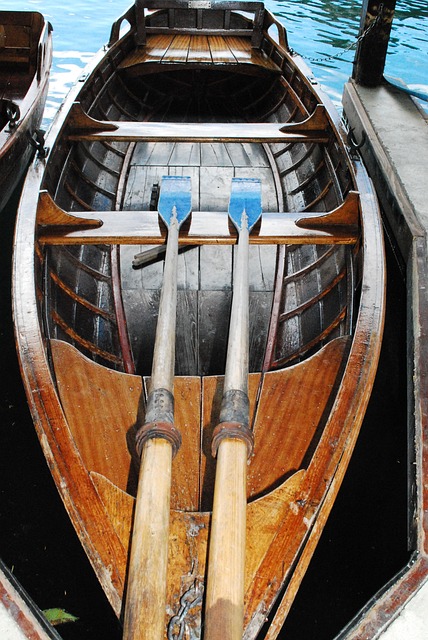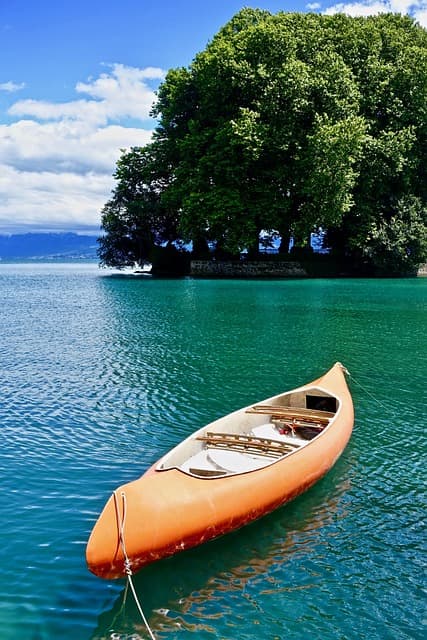Canoeing is a timeless outdoor activity that offers individuals the opportunity to connect with nature, explore waterways, and embark on memorable adventures. However, before setting out on your canoeing journey, it’s important to understand the concept of canoe weight limits. These limits play a crucial role in ensuring safety, stability, and overall enjoyment during your canoeing experience. In this article, we will delve into the intricacies of canoe weight limits, addressing questions, concerns, and key considerations for both beginners and experienced paddlers.
Why are Canoe Weight Limits Important?
Canoe weight limits, oftentimes referenced as the thresholds of “maximum capacity” or the “pinnacle load capacity,” stand as sentinels, demarcating the zenith of weight a canoe can bear whilst upholding its equilibrium, agility, and safety. A trespass beyond these hallowed limits could birth an array of quandaries, such as a dwindling freeboard (the chasm betwixt the aqueous tapestry and the gunwales), a waning steadiness, and a waver in dominion over the vessel. Behold, the principal aims that underlie the edicts of canoe weight limits:
Safety First
Water activities inherently involve an element of risk, and canoeing is no exception. Prioritizing safety is paramount, and adhering to a canoe’s weight limit is a fundamental step in achieving this. By staying within the designated weight range, canoeists can enhance their safety on the water in the following ways:
- Preventing Capsizing and Swamping: Canoes are carefully engineered to maintain stability and balance under normal conditions. Excessive weight can upset this equilibrium, increasing the likelihood of capsizing or swamping, especially in choppy waters or adverse weather conditions;
- Enhanced Buoyancy: Canoes rely on their buoyancy to stay afloat. Staying within the weight limits ensures that the canoe’s buoyant properties are optimized, helping it ride the waves more effectively and reducing the risk of water entering the canoe.
Maintaining Stability
A stable canoe is essential for a comfortable and controlled paddling experience. Canoes are designed with specific weight distributions in mind, which contribute to their stability. Going beyond the weight limits can compromise this stability and lead to:
- Dangerous Tilting: Overloading a canoe causes it to tilt to one side, significantly diminishing its stability. This tilting makes paddling difficult and can even result in tipping if weight is not redistributed properly;
- Unpredictable Maneuvering: An overloaded canoe becomes less responsive to paddling inputs, making it challenging to navigate through obstacles or currents. Staying within the weight limit ensures that the canoe maintains its agility and maneuverability.
Preserving Performance
The performance of a canoe is influenced by its weight distribution and balance. Staying within the weight limit is essential for maintaining optimal performance characteristics:
- Efficient Paddling: Canoes are designed to glide gracefully through the water. Exceeding weight limits can lead to increased drag and resistance, making paddling more strenuous and less efficient;
- Responsive Handling: Canoes that are not overloaded respond more promptly to steering and paddling adjustments, allowing canoeists to navigate with precision. Adhering to weight limits preserves this responsiveness.
Ensuring Longevity
A canoe is a significant investment, and proper care is essential to ensure its longevity. Excessive weight places undue stress on the canoe’s structure, leading to potential long-term damage:
- Structural Integrity: Staying within the weight limit prevents the hull and other components of the canoe from enduring excessive stress. Over time, overloading can lead to cracks, leaks, and other forms of structural damage;
- Preventing Deformation: Prolonged exposure to excessive weight can cause the canoe’s hull to deform, compromising its shape and overall performance. Adhering to weight limits safeguards against such deformation.
Factors Affecting Canoe Weight Limits

Canoe weight limits are influenced by various factors, and understanding these factors is essential for safe and enjoyable paddling. Here are the key elements that contribute to determining a canoe’s weight limit:
| Factors | Description |
|---|---|
| Hull Material and Design | The materials and design of the canoe’s hull significantly impact its weight limit. Different materials like aluminum, fiberglass, and polyethylene offer distinct characteristics. The canoe’s shape and dimensions also play a role in weight distribution and water interaction. |
| Volume and Buoyancy | The volume and buoyancy of the canoe influence its ability to support weight. A higher volume and greater buoyancy allow the canoe to carry more weight while maintaining stability. Manufacturers consider these factors to determine weight limits, ensuring the canoe displaces water effectively. |
| Number of Paddlers | The number of paddlers in the canoe affects weight distribution. Tandem canoes designed for two paddlers have higher weight limits to accommodate synchronized movements. Solo paddlers have lower weight limits for a personalized experience. |
| Gear and Equipment | The canoe’s weight limit is influenced by the gear and equipment stored within. Camping gear, food, and safety essentials contribute to the overall weight. Balancing necessary equipment with buoyancy is important for a smooth gliding experience. |
| Water Conditions | Canoe weight limits vary based on the type of water conditions it will encounter. Calm lakes might allow for more weight leeway, while rivers and seas with unpredictable currents demand careful consideration for safety. Weight limits are adapted to ensure safe navigation and enjoyment across different water environments. |
Top Considerations for Canoe Weight Limits

Plan Ahead
The first step in preparing for a canoe trip is to meticulously assess your requirements. Take the time to answer the following questions:
- Number of Paddlers: How many people will be paddling the canoe? Each individual adds to the overall weight, and this must be accounted for when considering the canoe’s weight capacity;
- Gear and Equipment: What items do you intend to bring along? Compile a comprehensive list of gear, including camping equipment, food, water, clothing, and any other essentials. Be mindful of even the smallest items, as they can accumulate and contribute to the overall weight;
- Trip Duration and Water Conditions: Will you be embarking on a short day trip or an extended expedition? The length of your journey influences the amount of supplies you need. Additionally, consider the water conditions you might encounter, as rougher waters might necessitate more stability.
Armed with this information, you can select a canoe that aligns with your anticipated load and journey.
Weigh Everything
Accurately weighing your gear and equipment is a crucial step that’s often underestimated. Even seemingly insignificant items can collectively surpass your expectations. Utilize a digital scale to measure the weight of each component, ensuring you’re accounting for every ounce. By having an accurate assessment, you’ll be better equipped to decide what can and cannot be accommodated.
Prioritize Safety
Safety should permeate every decision you make when planning a canoe trip. Exceeding a canoe’s weight limit introduces a myriad of potential hazards:
- Reduced Stability: Overloading the canoe can compromise its stability, increasing the risk of tipping over, especially in unpredictable water conditions;
- Diminished Maneuverability: An excessively heavy load can hinder your ability to navigate smoothly, particularly in tight spots or challenging currents;
- Increased Vulnerability: If you find yourself in rough waters, an overloaded canoe is more susceptible to capsizing or taking on water.
Practice Load Distribution
Achieving proper weight distribution within the canoe is akin to mastering an art form. Follow these tips for an evenly balanced load:
- Heavier Items at the Bottom: Place the heavier items, such as camping gear and provisions, at the bottom of the canoe. This lowers the center of gravity and contributes to overall stability;
- Secure Your Gear: Use ropes, straps, or tie-downs to secure your gear in place. Preventing shifting during paddling maintains balance and prevents unexpected weight shifts.
Consider Canoe Type
Different canoe types cater to varying weight limits and functionalities. Choose a canoe that suits your intended use and load requirements:
- Recreational Canoes: Designed for leisurely paddling on calm waters, these canoes have moderate weight limits and are suitable for day trips or casual outings;
- Touring Canoes: Geared toward longer journeys, touring canoes typically have higher weight capacities. They accommodate extra gear and are designed for more stability in varied water conditions;
- Whitewater Canoes: These canoes are built to navigate fast-moving waters and rapids. They usually have lower weight limits due to their specialized design.
Conclusion
Understanding canoe weight limits is crucial for a safe, enjoyable, and successful paddling experience. Staying within the recommended weight limit ensures optimal stability, performance, and safety on the water. Remember that weight limits are carefully calculated by manufacturers to provide the best possible experience.
Whether you’re a beginner exploring serene lakes or an experienced paddler navigating challenging rivers, respecting canoe weight limits is an essential part of responsible and rewarding canoeing. By following these guidelines and considering the factors that affect weight limits, you can make the most of your canoeing journey while prioritizing safety and enjoyment.
FAQ
It’s strongly recommended to adhere to the manufacturer’s weight limit. Even a slight excess can compromise safety and stability, especially in challenging conditions.
Weigh your gear and equipment using a scale and add it to the combined weight of paddlers. Manufacturers’ recommended weight limits should account for both paddlers and gear.
While lightweight canoes may have a higher weight limit, exceeding it is still risky. Remember that stability, buoyancy, and performance can be compromised regardless of the canoe’s weight.
Distributing weight evenly can help maintain stability, but it doesn’t change the overall load capacity. The total weight, including gear, paddlers, and equipment, must still remain within the specified limit.


